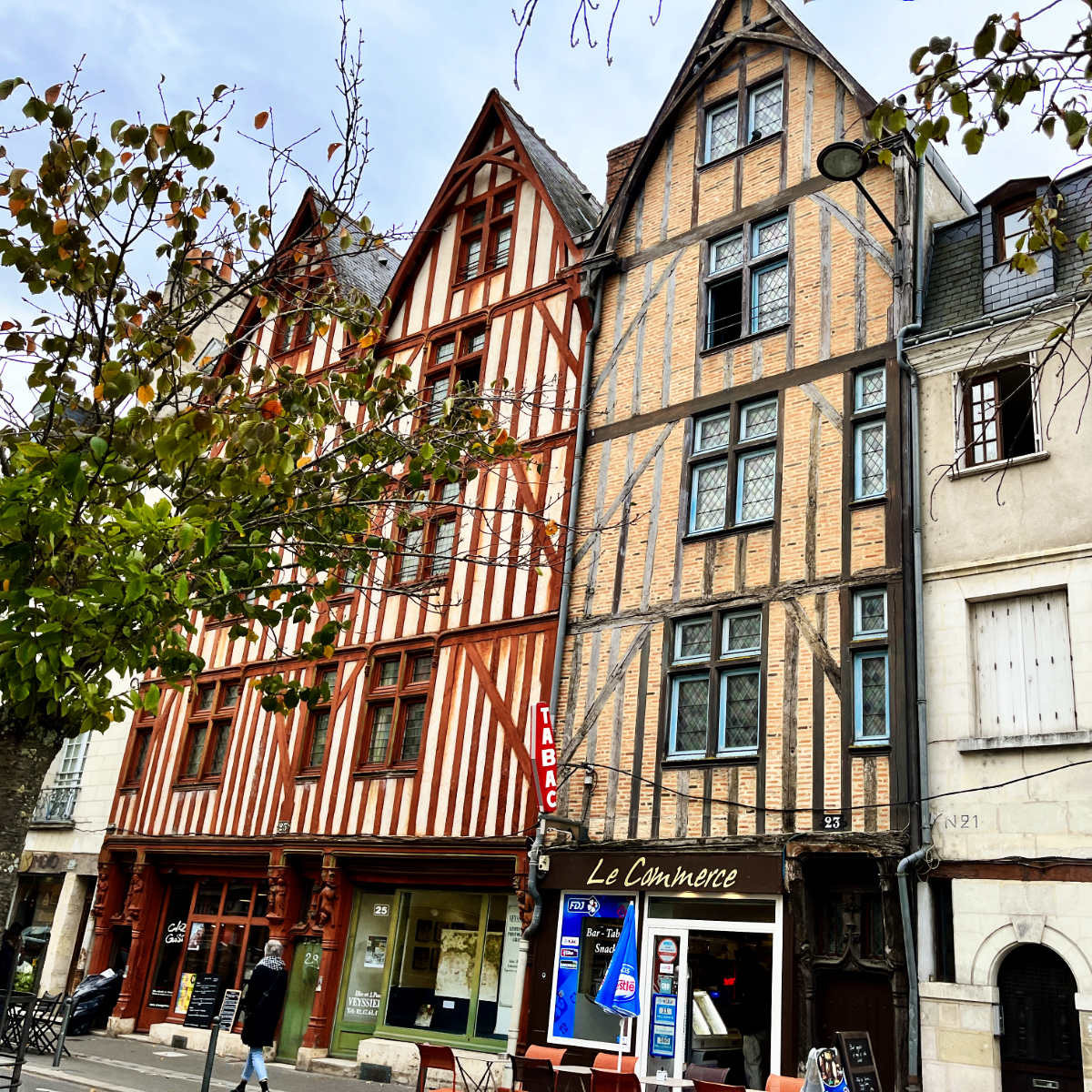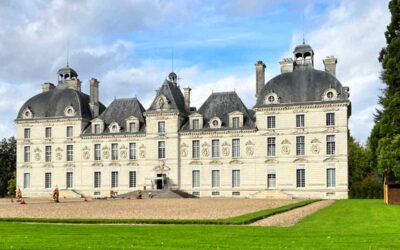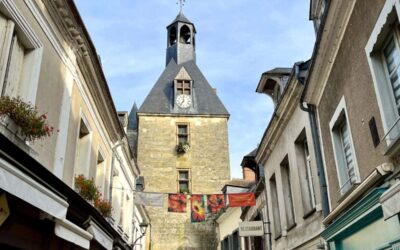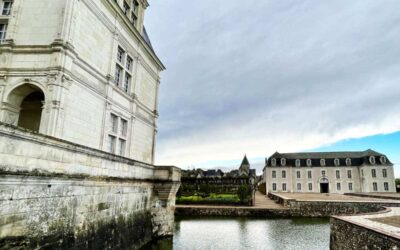The city of Tours is one of the oldest cities in France. Located on the river Loire, it is a beautiful city surrounded by several world-famous châteaux that are within an hours drive.
It is within 1 hour of several famous châteaux in the area like Château de Chenonceau, Château Royale d’Amboise, Château de Chaumont, Château de Chambord, and Château de Cheverny, near the cities of Amboise and Tours. And it is about 3 hours away from Paris, making it ideal for a day trip from the city.
But even before the chateaux of the Loire, the city of Tours is one that marked the history books, dating back to the Roman era. So let’s see why Tours is so famous and what there is to see and do in the city, shall we? Allons-y!
- History of Tours
- Things to do in Tours
- 1. Tours Cathedral
- 2. Château de Tours
- 3. Tours Amphitheatre
- 4. Vieux Tours
- 5. Place Plumereau
- 6. Tours Charlemagne
- 7. Basilique Saint-Martin
- 8. Toue River cruises
- 9. Musée des beaux arts
- 10. Botanical garden
- 11. Halle de Tours
- 12. Château de Villandry
- 13. Église Saint-Julien de Tours
- 14. Harry Potter store (Les Trois sorciers)
- 15. Musée du Compagnonnage
- 16. Hotel Gouin
- 17. American Monument Fountain
- 18. Resistance and Deportation Memorial
- 19. Loire Valley châteaux
- 20. Wine tastings
- How to get to Tours?
- How easy is it getting around?
- How many days should you spend?
- Where should you stay?
History of Tours
The city of Tours is located with the Loire river on one side and the Cher river on the other. This strategic location made a settlement here of vital importance for centuries. The city was formerly named Caesarodunum by its founder, Roman Emperor Augustus, after his predecessor Julius Caesar who had conquered Gaul (old France).
Much of what is known about this period is due to the famous 6th century historian Gregoire de Tours who was from the area, and who produced several books about the time, including about Clovis, the 1st King of the Franks.
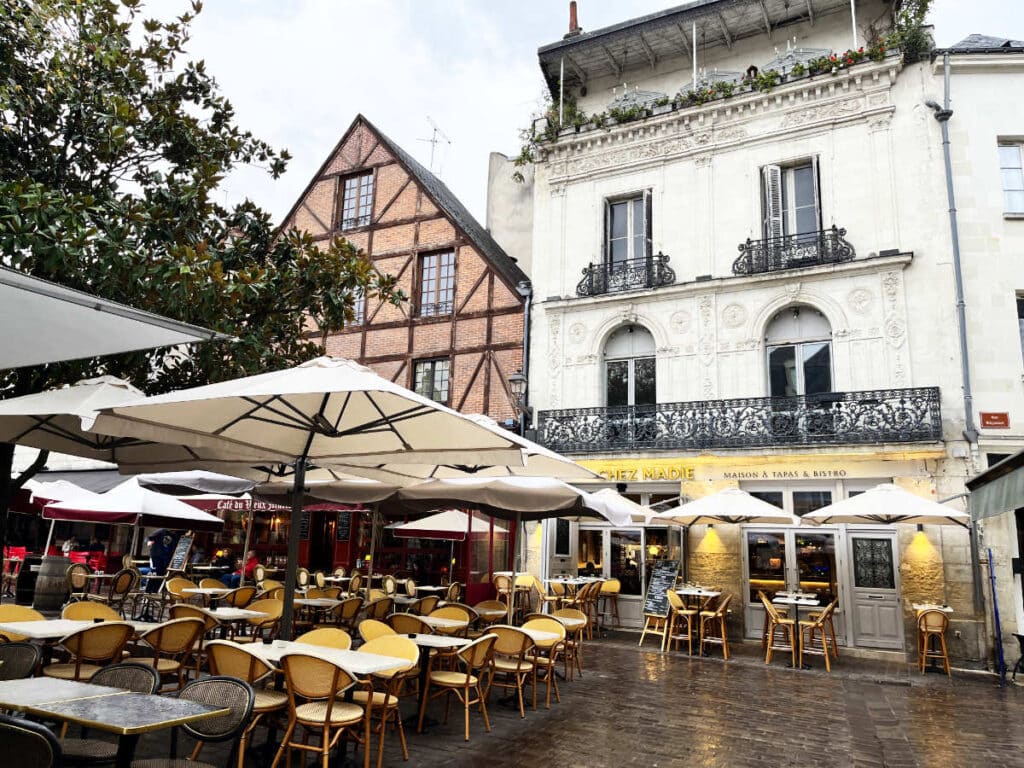
It was also the location of the historic Battle of Tours of 732, when Frankish tribes led by Charles Martel defeated over the invading Saracen forces who had come from the muslim-ruled Iberian Peninsula (today Spain). The defeat prevented the Sarancen invasion of France, stopping further invasions into northern Europe.
The city of Tours became the seat of the authority of the Counts of Tours (later Counts of Anjou) and the Kings of France, as the capital of the province of Tourraine. The one of the first major currencies used in France was named after the city’s mint, the Livre Tournois.
In the Middle ages, Tours was heavily disputed between the Counts of Anjou and the Counts of Blois. (The English King Richard the Lionheart fought here as he was also the Count of Anjou and Aquitaine, titles gained from war and from his mother Eleanor of Aquitaine.)
The city of Tours became so important, it was practically considered a capital of France between 1430 and 1530, with a continual stay of kings in the province of Touraine.
However, it was the château at Blois (Louis XII’s childhood home) and then Château d’Amboise (François Ier’s childhood home) where the Kings of France would eventually stay, rather than the Château at Tours.
Although Tours would slowly decline in importance as the French royals would install themselves in Fontainebleau and then eventually Versailles, the city would become the capital of France again briefly in 1870 during the Franco-Prussian war. As Paris was under seige for 4 months by the Germans, and the French government operated from Tours during that period.
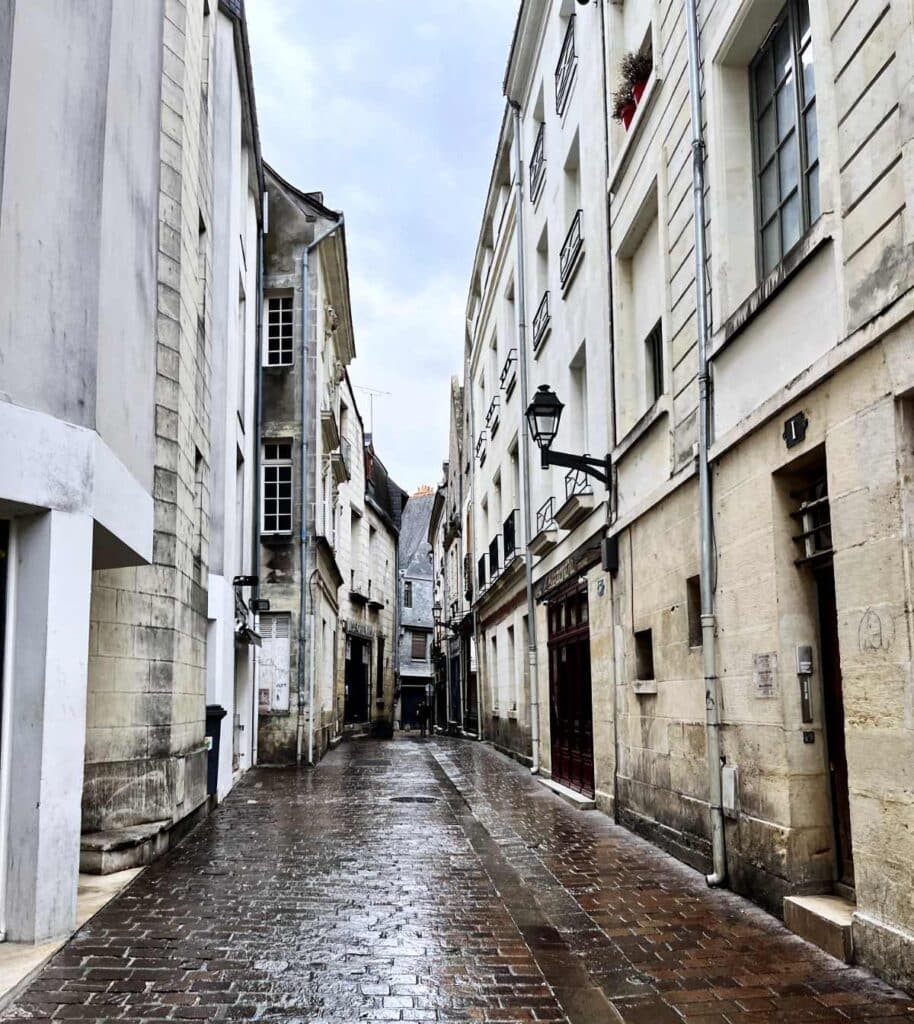
During WWI, Tours became a garrison town with 25,000 American soldiers stationed here in 1917. Factories for the manufacture of uniforms, repair shops for military equipment, munitions dumps, and even an American military hospital was set up to support the Allied armies.
The city of Tours suffered greatly during WWII, when it was severely bombed. Large fires destroyed much of the city’s core. Many monuments around the city are dedicated to this era, including a bridge named after Woodrow Wilson, the U.S. president during the war.
After the war, reconstruction efforts have made it a vibrant center in the Loire valley, and a university town attracting the young and old.
Things to do in Tours
1. Tours Cathedral
The Cathédrale Saint-Gatien, which is also known as the Tours Cathedral is one of the grand gothic cathedrals of France.
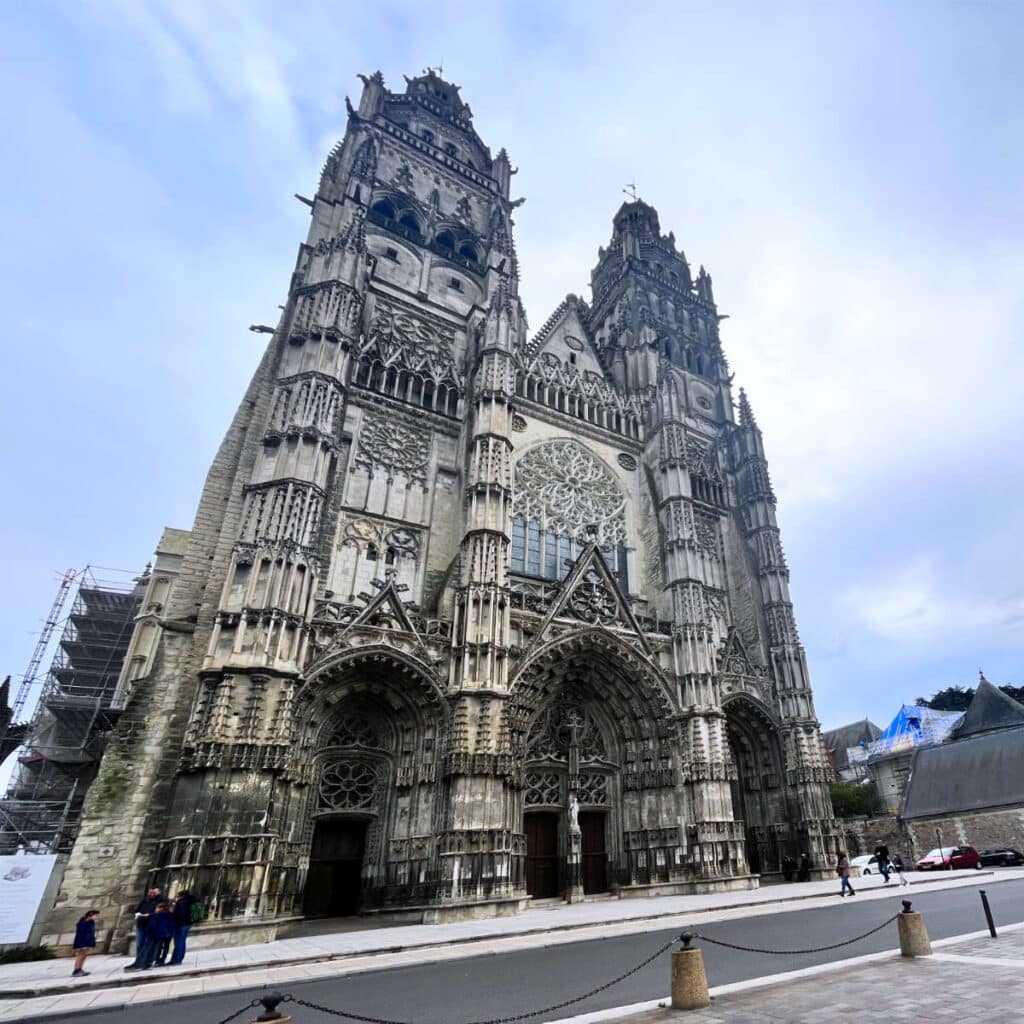
It is the seat of the Archbishops of Tours, and construction began in the 12th century, around the same time as the cathedrals of Paris, Reims, and Chartres. Earlier churches have stood on the site, dating back to the 4th century.
It is a Roman Catholic church and is also notable for holding the tombs of the children of Anne of Brittany and her first husband, King Charles VIII of France. (Her 2nd husband was King Louis XII, making her twice the Queen of France.)
In 1793, during the French Revolution, it was nationalised and transformed into a Temple of Reason, until it was finally restored to a church in the 19th century.
2. Château de Tours
Constructed in the 11th century, the Château de Tours stands just footsteps away from the Cathedral of Tours. Unlike the newer and ornamental Renaissance châteaux of the Loire, the Château de Tours is a medieval fortress that was built to defend.
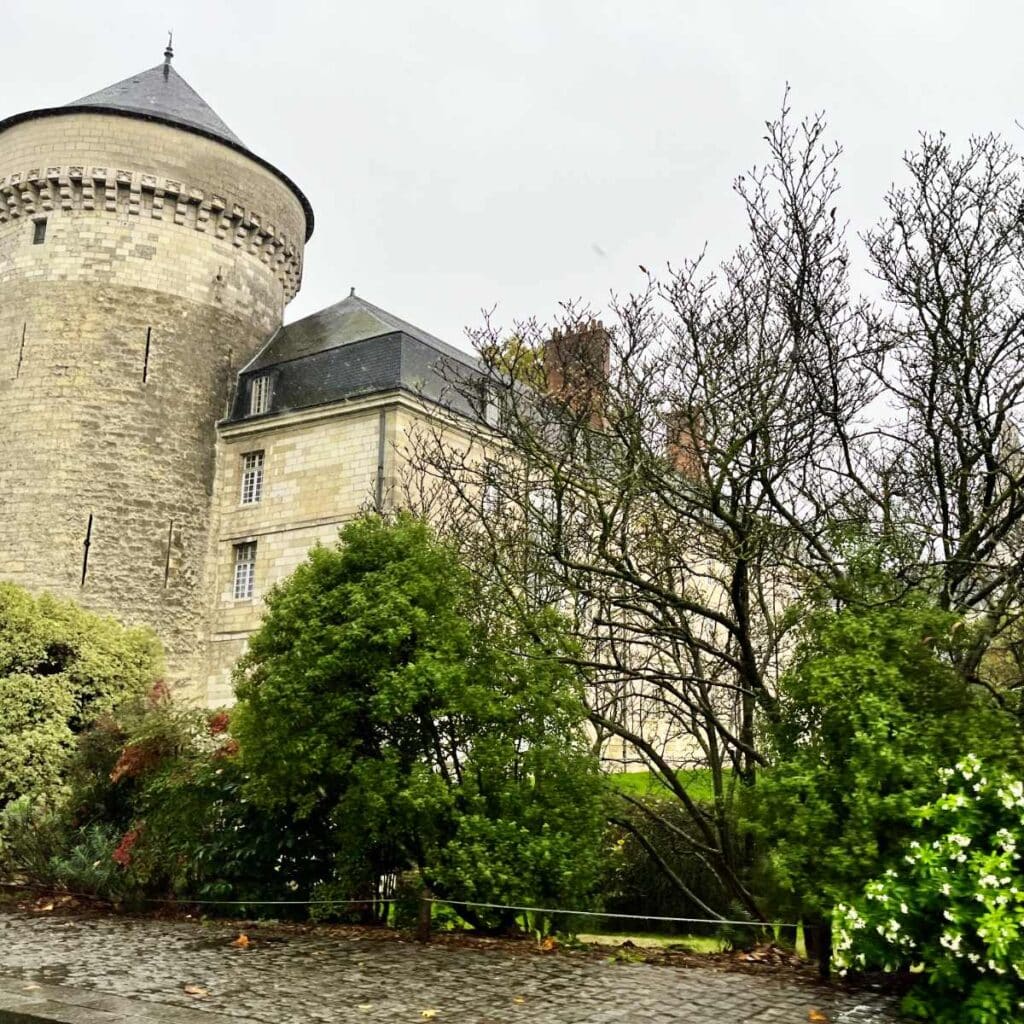
It was almost completely destroyed in the 18th century, with only two medieval towers remaining. A newer wing to the château was added later. These days it is an events and cultural space, holding temporary exhibitions with paintings, sculptures, engravings, drawings, photography, and video.
3. Tours Amphitheatre
As Tours used to be a Roman settlement, it used to hold one of the largest amphitheaters of the Roman Empire in France, the Tours Amphitheatre. Known at the time as the Caesarodunum amphitheater, it is located directly behind the Tours Cathedral and
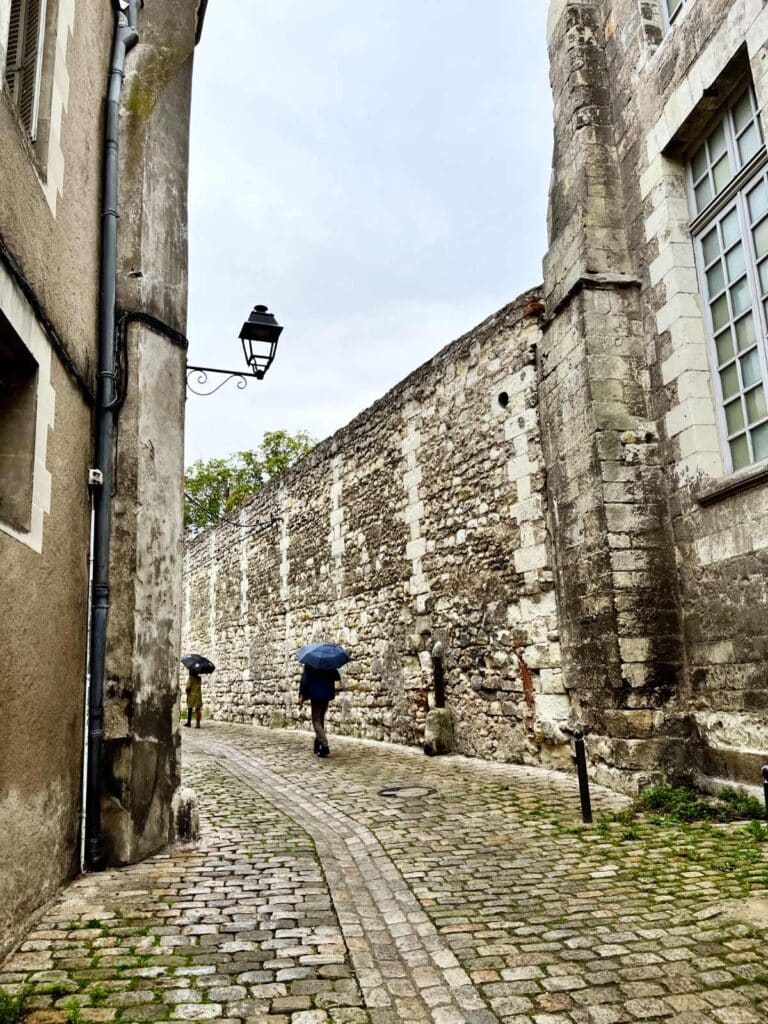
However, not much of the amphitheatre remains above ground today. Its walls were integrated in the ramparts of the city, along with the Château de Tours, and much of it was completely forgotten and demolished over the centuries.
The amphitheater was rediscovered (1855) during construction works nearby, and its cellars uncovered under the city. You can still see some of the walls and ruins along Rue du Général-Meusnier, Rue Racine and Rue de la Bazoche, which are free to explore.
4. Vieux Tours
In the center of the city of Tours, stands the medieval old town. With its timbered buildings and narrow cobblestone streets, there is much to explore.
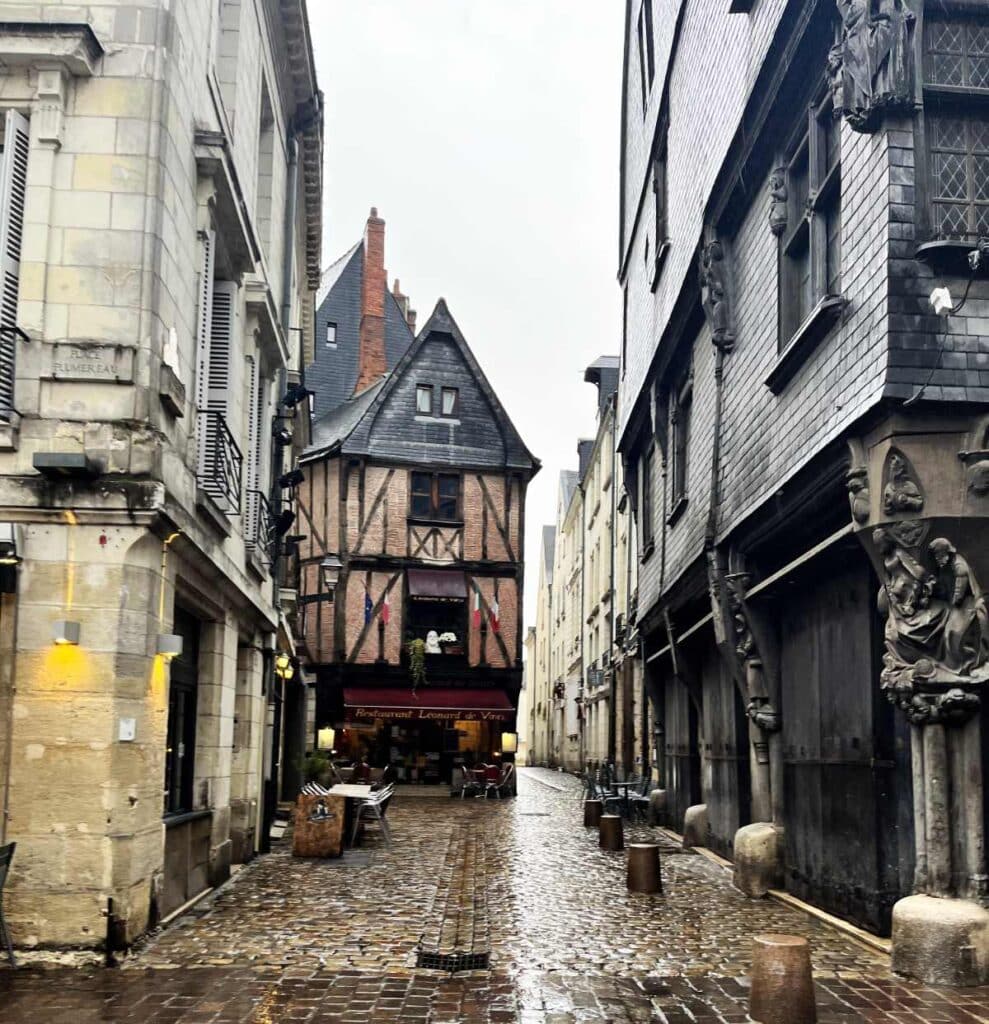
Notable streets in the area are Rue de Colbert, Rue de Commerce and Rue de Grand Marché, all of which are lined with tiny shops and restaurants.
5. Place Plumereau
Place Plumereau in the center of the old part of Tours is a large square that is lined with restaurants.
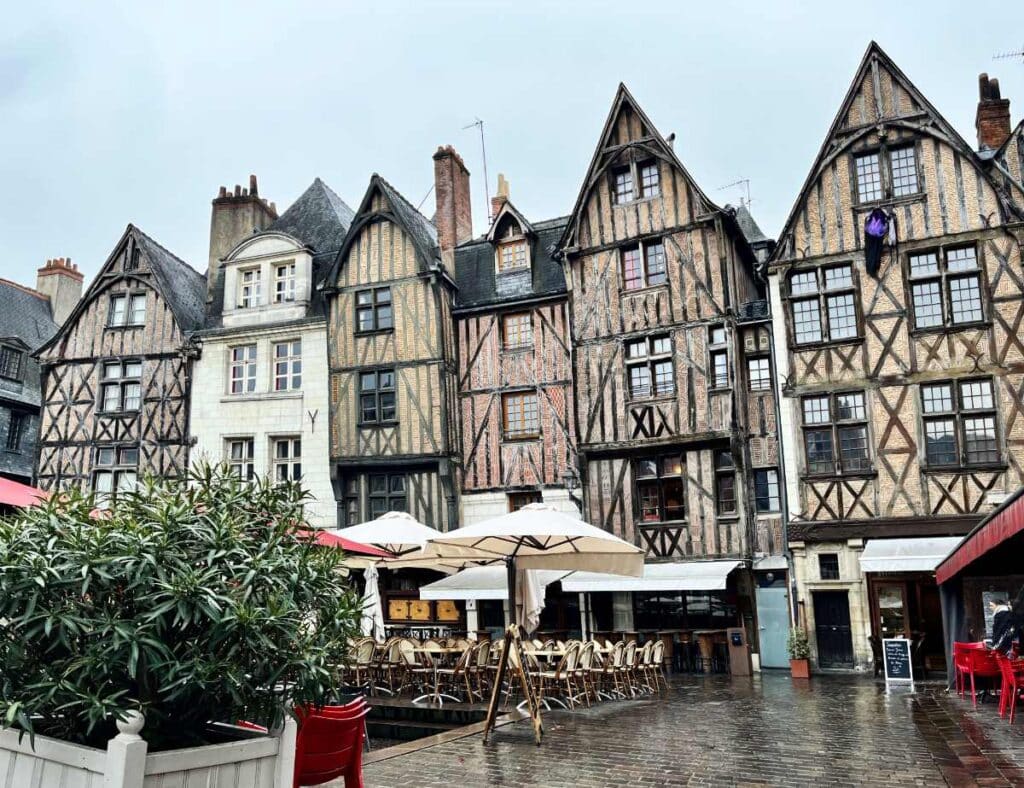
It is a bustling part of town that gets very busy in the evening, so head over early if you are looking for dinner and a prime spot to watch all the activity.
6. Tours Charlemagne
The Charlemagne tower in Vieux Tours is a remnant of an old basilica dedicated to Saint Martin of Tours. Saint Martin was the local Bishop of Tours from the 3rd century who is heralded as one of the patron saints of France.
Known as Martin the Merciful, he converted to Christianity at a young age and was later sanctified.
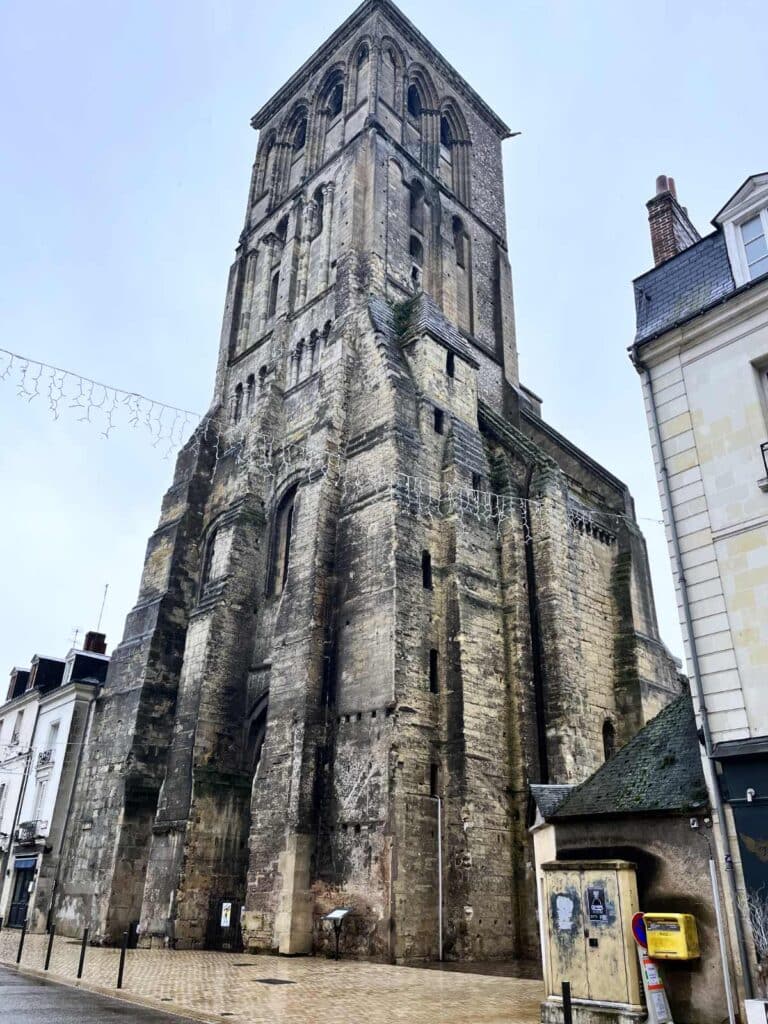
The name of Tour Charlemagne however comes from the 8th century, when Emperor Charlemagne buried his 4th wife Luitgarde d’Alémanie near the tomb, after she died during his stay in Tours.
The Tour Charlemagne is the start of the Circuit Saint Martin to follow the footsteps of Saint Martin. Signs around the city note that the “Pilgrimage of Tours is one of the oldest of Christendom along with ones in Rome, Jerusalem, and Santiago de Compostela”.
7. Basilique Saint-Martin
A few meters across the street from the Tour Charlemagne is the Basilique Saint-Martin. With gold decorations on its dome, it is another stop on the Circuit Saint-Martin.
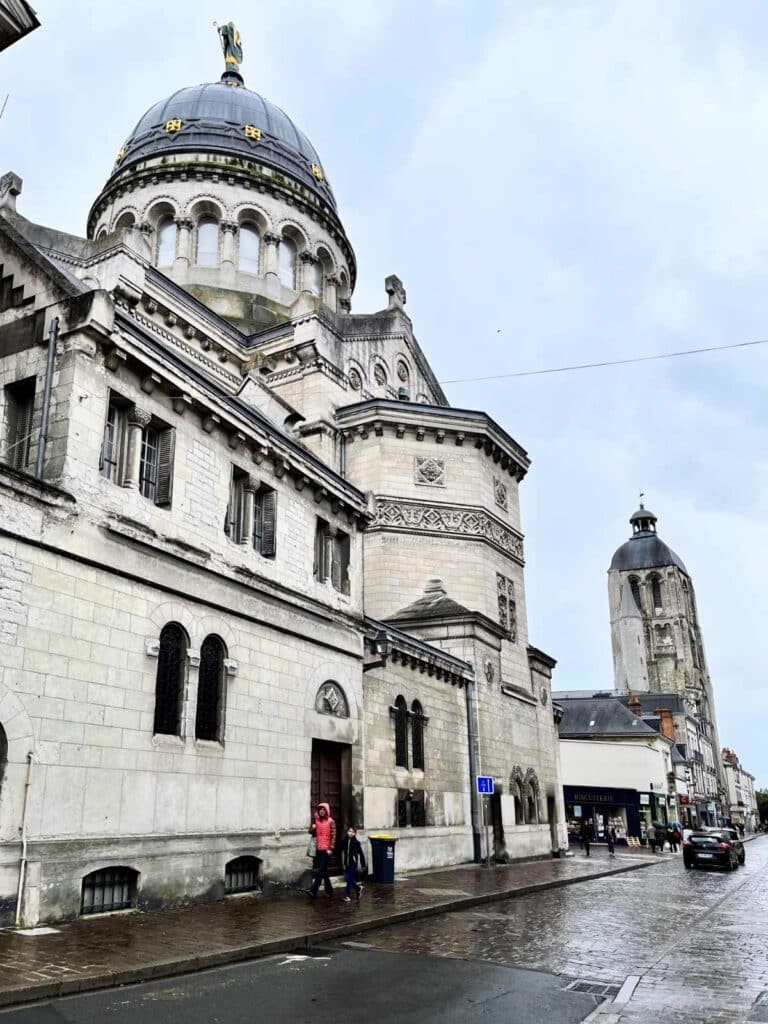
The present church was built between 1886 and 1924 in a neo-Byzantine style, on the site of a church which dated back to the 6th century.
8. Toue River cruises
Around Tours you will find the traditional flat-bottomed wooden boats called the “Toue” which sail on the Loire and Cher rivers.
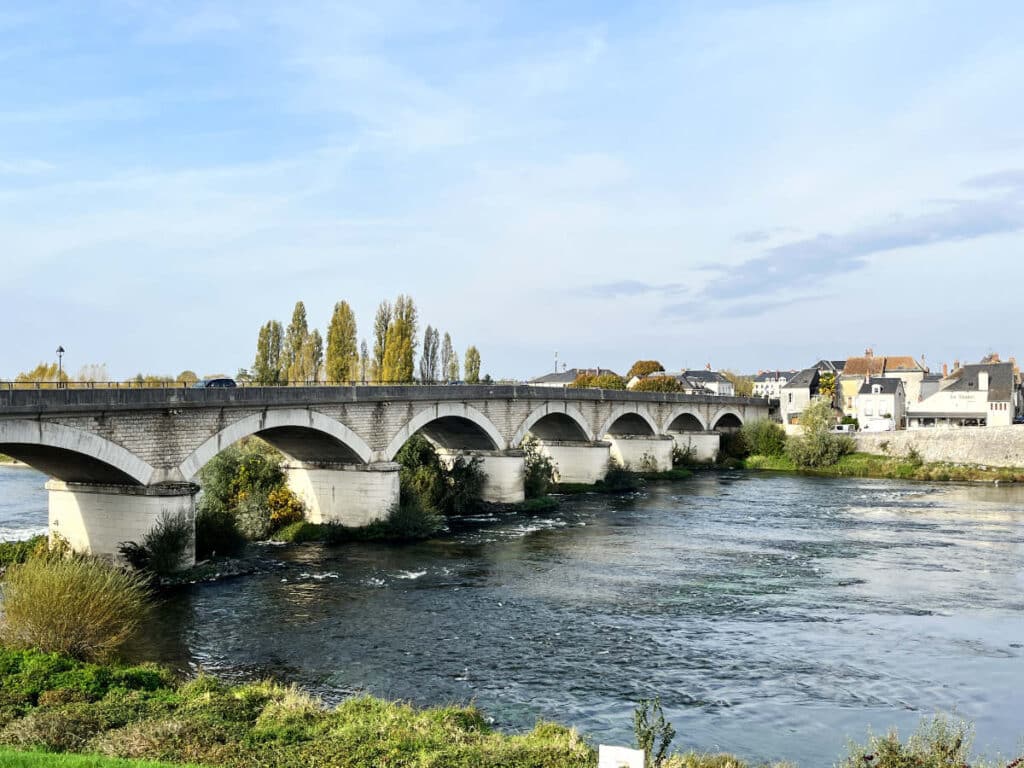
The boats usually sail in the summer time, offering commentary about the local history, stories and other anecdotes while floating past beautiful landscapes. You can catch a toue on the quais along the Loire, from the center of Tours.
9. Musée des beaux arts
The Musée des Beaux-Arts de Tours is located in a former palace of the Bishops of Tours, near the Cathedral St. Gatien. The museum has a wide collection of paintings from the Middle ages, when Tours was at its height in terms of cultural influence.
There are also many sculptures dating back to antiquity and the Roman era, as well as more recent paintings from the 18th and 19th century. The museum is also famous for its model of Fritz, a stuffed Asian elephant that was shot when it became uncontrollable during a Barnum & Bailey circus parade in Tours in 1902.
10. Botanical garden
Established in 1843, the Jardin botanique de Tours is a large botanical garden holding over 2000 types of trees and plants.
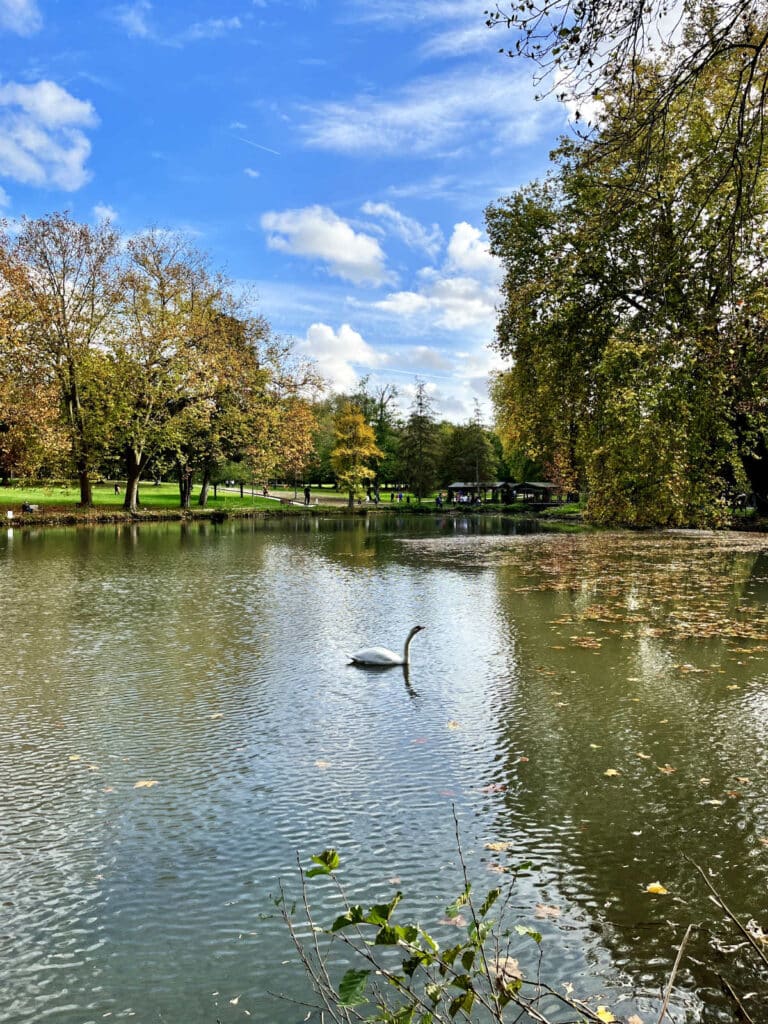
Inside the garden are several greenhouses to allow for a wide variety of plants to be grown, including several exotic species and medical plants. The gardens are open daily, although may be closed on holidays.
11. Halle de Tours
The Halle de Tours is a large French indoor market selling local specialties such as artisan breads, charcuterie, cheeses & wine from the terroir.
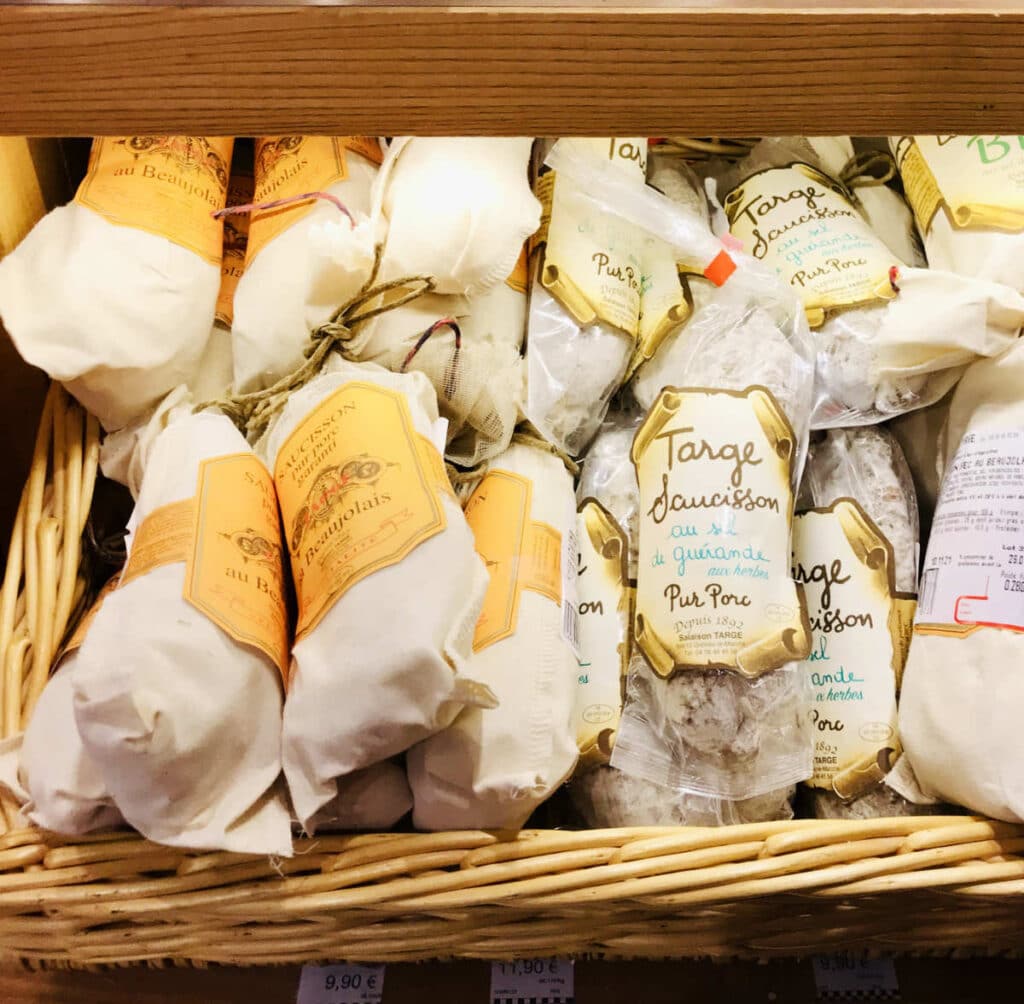
The current building dates back to the 19th century, and people flock here form all over the Loire for its gastronomical delights.
12. Château de Villandry
About 20 minutes outside of Tours, you will find the magnificent Château de Villandry and its beautiful gardens. While the other grand châteaux are a bit further away, the Château de Villandry is a lovely place to visit in the afternoon, after visiting the city center of Tours.
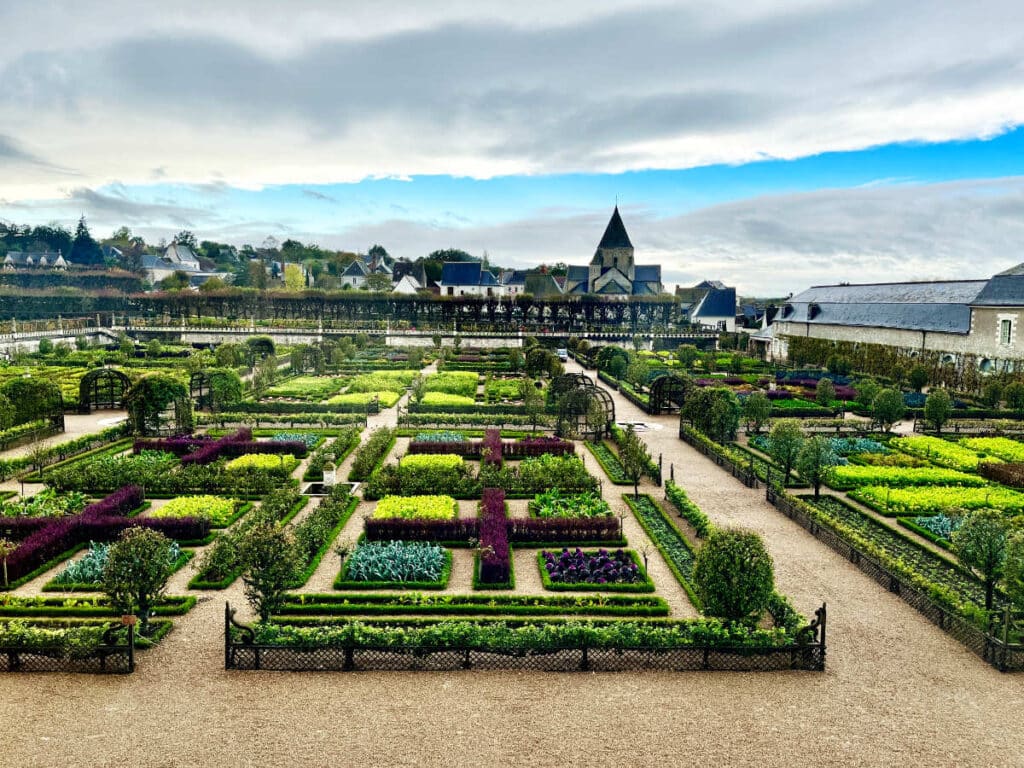
Dating back to the 10th century and the Middle ages, the fortress that once stood here was known as the “Coulombiers”. It is believed that the French King Philippe Auguste and English King Richard the Lionheart met at Villandry to discuss peace terms. You can see still see the fortified castle of Coulombiers as it was during this period.
Today, the Château de Villandry is a private château with elaborate exhibitions inside, along with beautiful curated gardens and even a labyrinth maze. You can find guided tours to take you Château de Villandry from Tours here.
13. Église Saint-Julien de Tours
A church has stood on the site of the Église Saint-Julien de Tours since the 6th century. The current building dates mostly back to the 13th century after it was destroyed and rebuilt many times (including during WWII).
14. Harry Potter store (Les Trois sorciers)
If you are a Harry Potter fan, you will want to check out Les Trois sorciers shop in Tours. It is located on Rue du Commerce and is dedicated to toys, books, and tricks for all sorts of sorcery and witchery.
15. Musée du Compagnonnage
Just in front of the Église Saint-Julien de Tours church is the Musée du Compagnonnage.
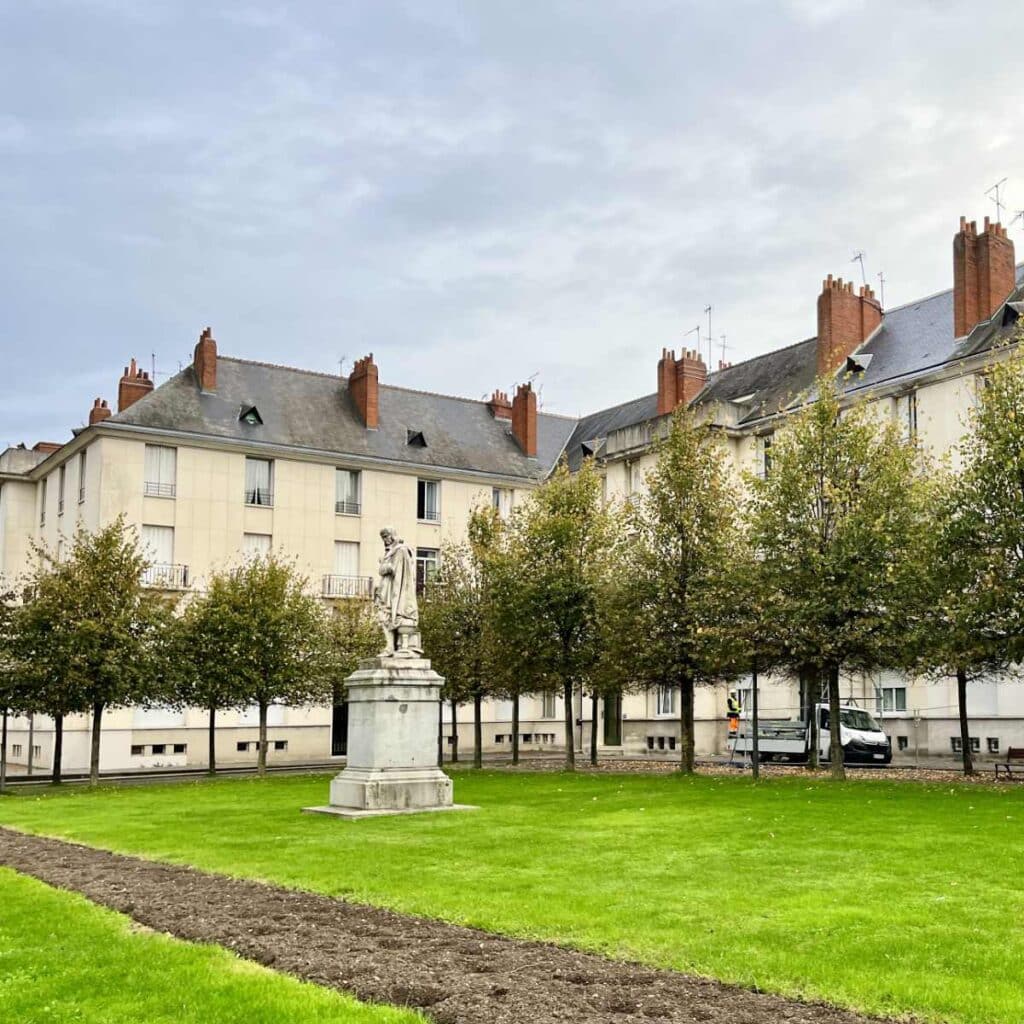
It is a museum displaying crafts & exhibits relating to the trade-guilds and their history. Skilled labor works such as stone sculpting, woodcarving, etc are located in what used to be an abbey attached to the church, along with temporary exhibitions.
16. Hotel Gouin
An emblematic building in the city of Tours is the Hotel Gouin. It is a 15th century hotel particulier (private mansion) that was the home of a family of silk merchants.
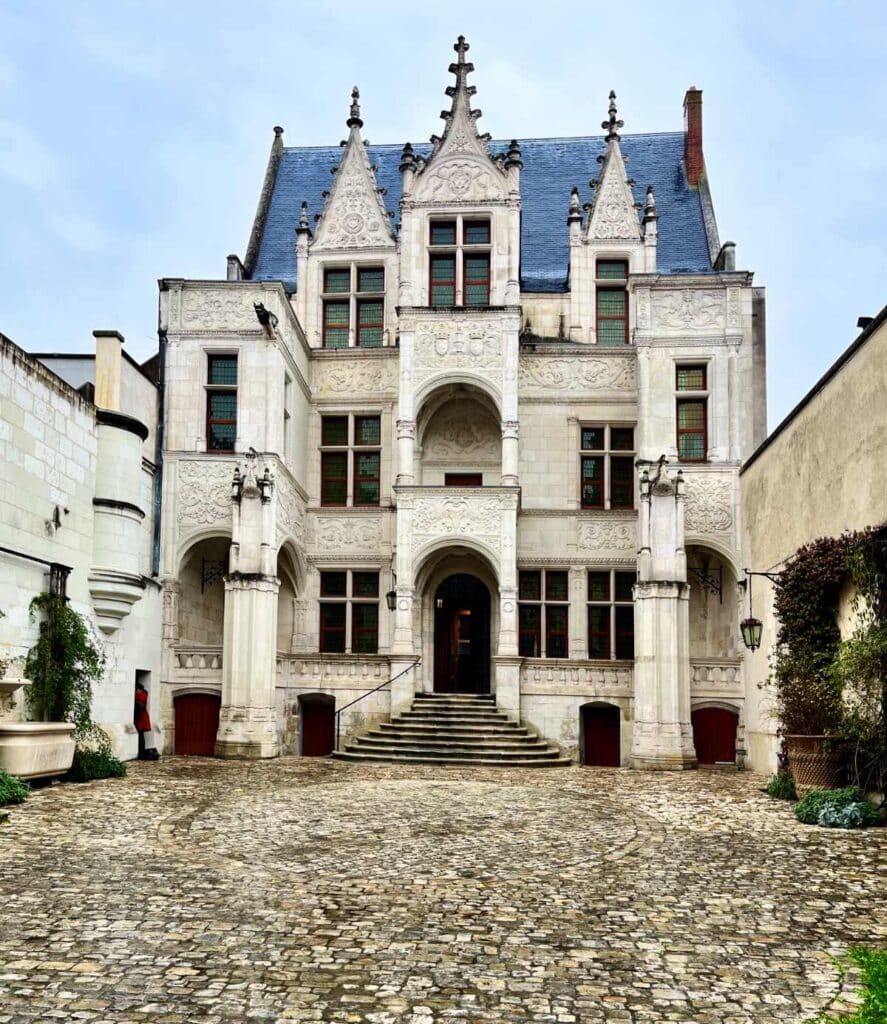
The sub-basement contains Galloroman remains, but the visible facade dates from the 16th century in early Renaissance style. Inside is an exhibition center featuring various exhibitions and events for limited periods of time.
17. American Monument Fountain
The Monument aux morts Américain de Tours was constructed by the U.S. Government in dedication to the 640,000 soldiers who served in the area during WWI.
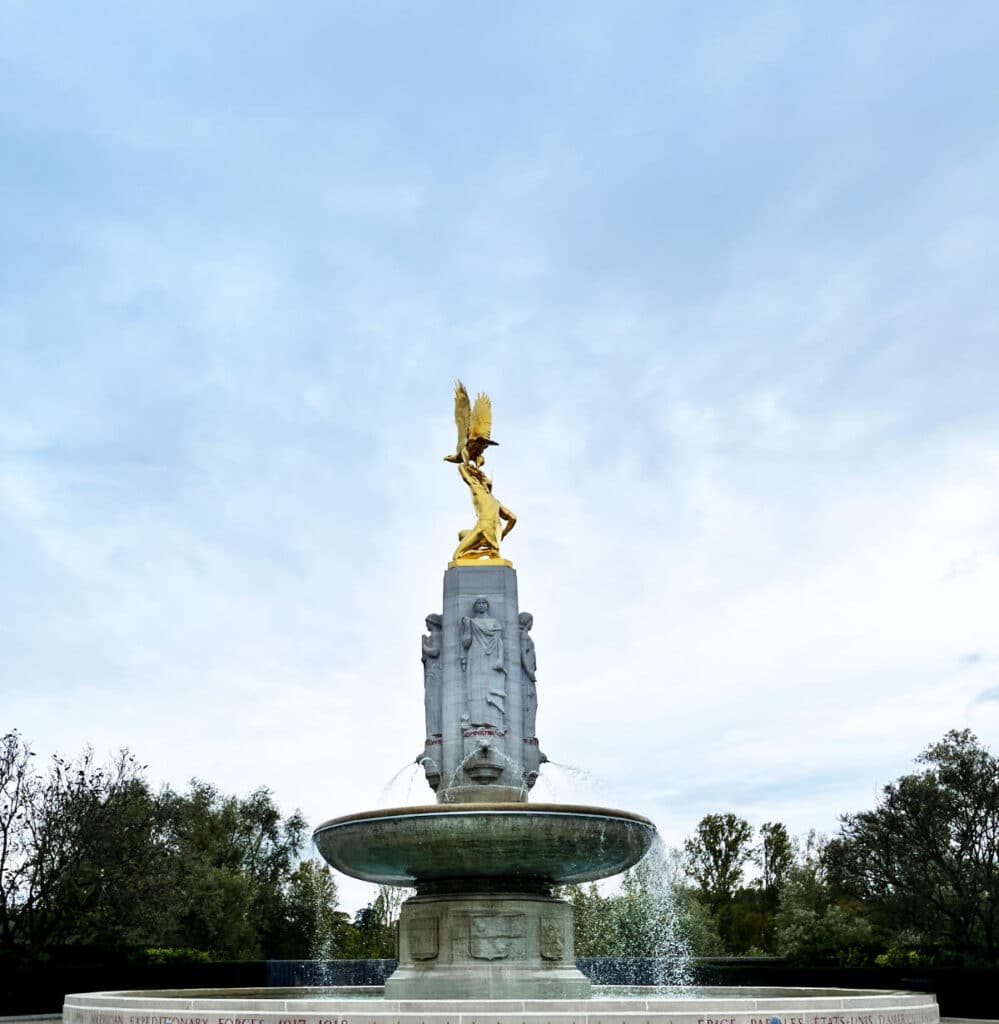
The American Services of Supply (SOS) had their headquarters in Tours, supporting the expeditionary forces that were operating across Western Europe.
This fountain with its golden eagle stands on the quai of the Loire river, right next to Pont Wilson bridge, in dedication to their bravery.
18. Resistance and Deportation Memorial
Right next to the American monument stands the Resistance and Deportation memorial for those who fought and lost their lives during WWII.
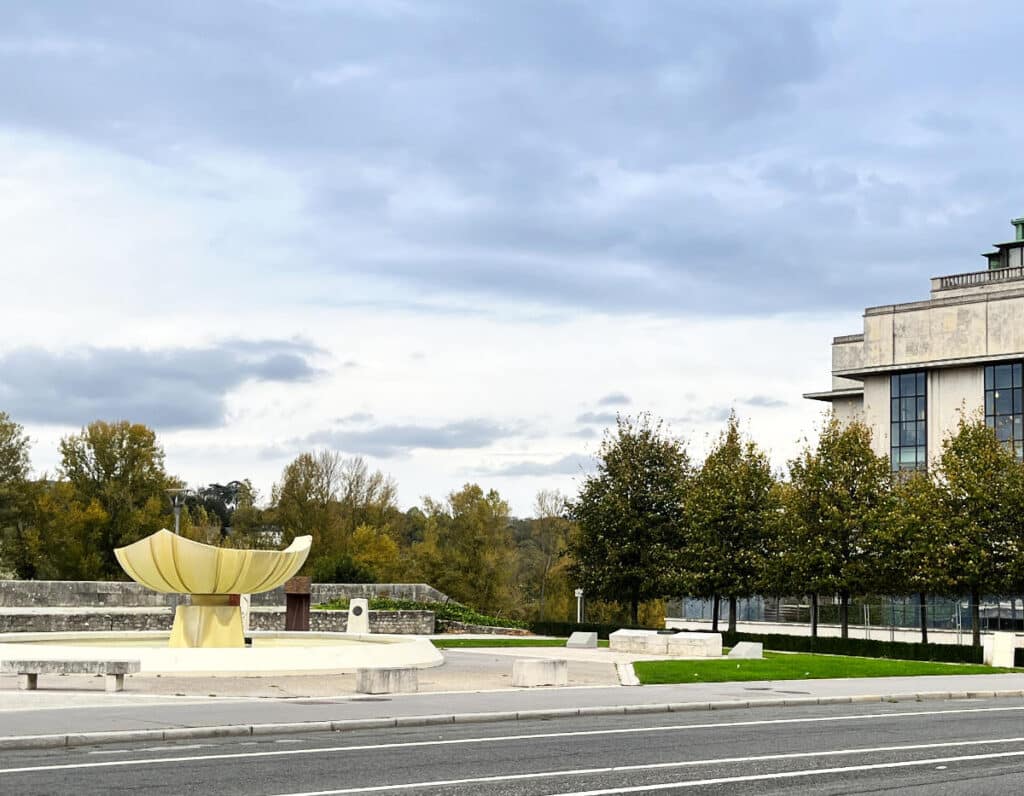
On the banks of the river Loire, it is a beautiful place to reflect on the past and the history that has occurred on the city’s shores.
19. Loire Valley châteaux
The Loire Valley is famous for its multitude of châteaux and the city of Tours is right in the thick of things.
The châteaux of Chambord, Blois, Chenonceau, Chaumont and Chéverny are within 1 hour, and the city of Amboise (with the Château Royale d’Amboise) is also within 30 minutes. The various Loire Valley châteaux are officially recognized on the UNESCO world heritage list.
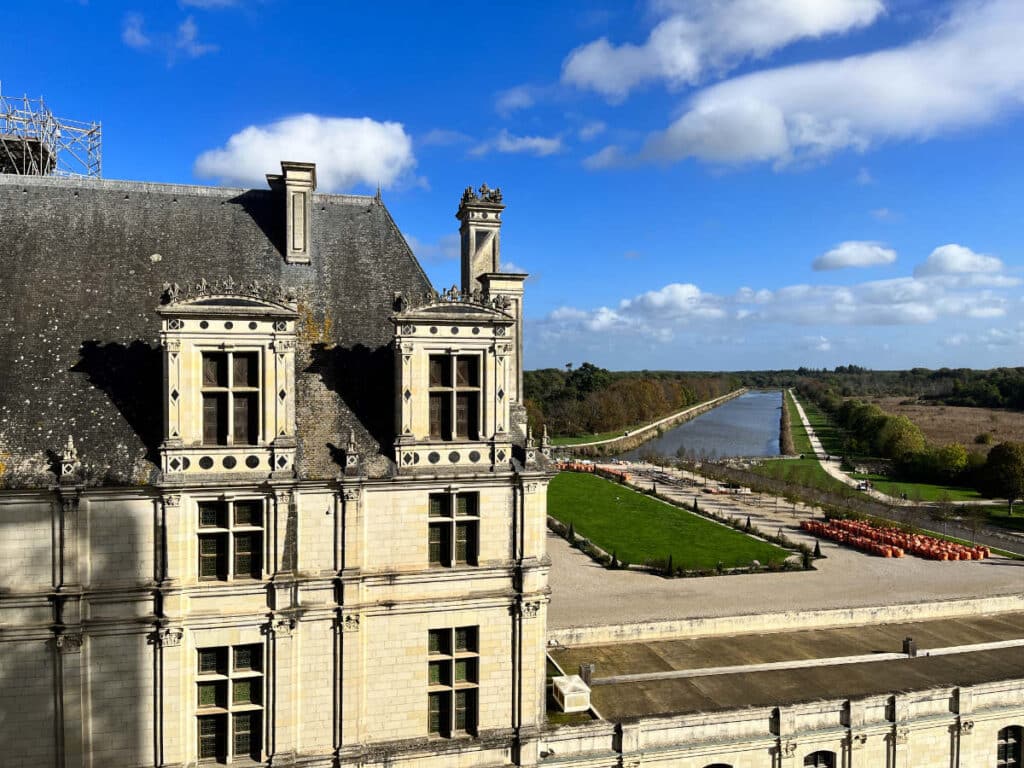
Along with those famous châteaux and royal palaces, there are several smaller châteaux for nobility who lived in the area and built housing near the seat of power during the Renaissance.
In all, you can easily spend a week in the area, going from château to château and exploring the area. (For those travelling with children, there is also the Zoo de Beauval at Saint-Aignan within 50 minutes of Tours, if you want to a break between the châteaux.)
20. Wine tastings
One of the local specialties in and around Tours is the Loire valley wines. Although not as famous as other French wines, they have a following of their own and are gaining in popularity.
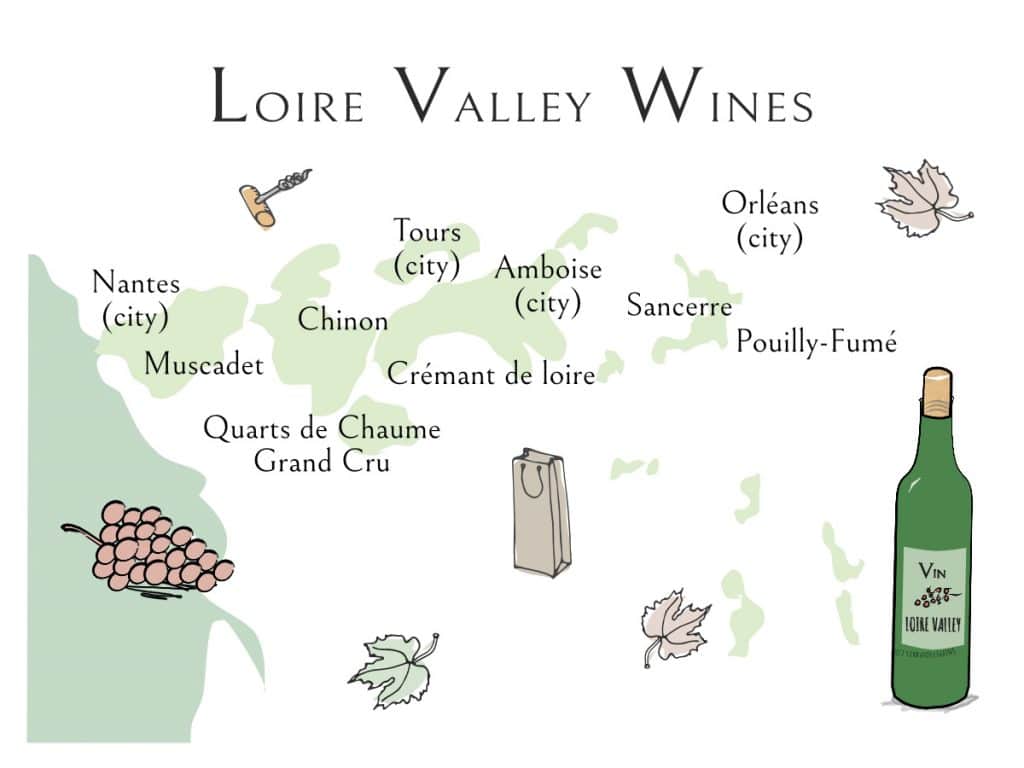
The Loire Valley mostly produces white wines, but there are some red wiens as well. The area is the second-largest concentration of sparkling-wine producing vines in France after the Champagne region.
Having French royalty like François I and Catherine de Medici nearby as well as the British royals, meant that their courtiers and followers all got used to drinking wines from the Loire Valley, and effectively marketed the wines to other nobles and royals around France and Europe.
There are many wine-tasting tours that will combine with chateaux visits in the Loire Valley.
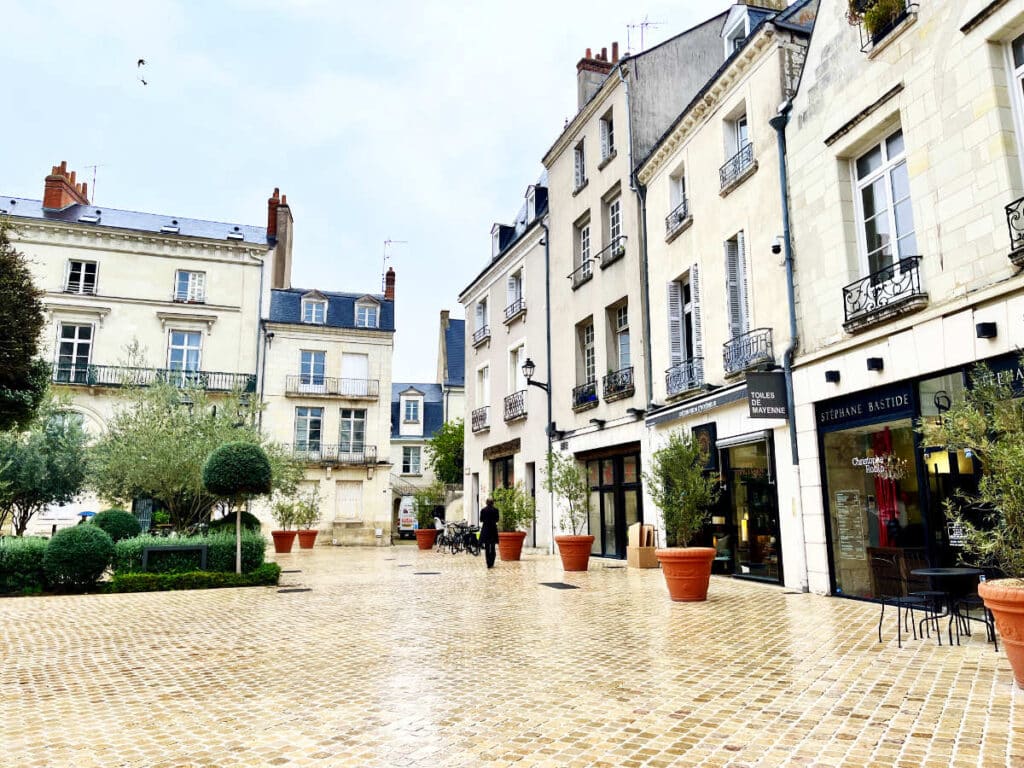
How to get to Tours?
The city of Tours is quite accessible from Paris by car and by train. It takes approximately 2h15 to drive from Paris depending on traffic. By train, you can take a TGV high speed train from Paris’s Montparnasse station to the city of Tours, which takes approximately 1 hour.
There are also various tour options leaving from Tours which head to the Château de Chambord and Chenonceau and other sights in the area. Certain tours combine wine-tasting and sightseeing. You can see the tour options for the city of Tours here.
How easy is it getting around?
The city of Tours is quite walkable, and there are several large parking lots that you can park your car at and visit all the centrally located sights. One of the larger parking lots is right under the quai in front of Pont Wilson bridge. From there you will find the Cathedral of Tours and the Château on one side, with the Old Tours on the other.
How many days should you spend?
I would suggest spending at least a day in Tours, to explore its different streets and neighborhoods. You can choose to base yourself here and stay overnight for a few days as there are several châteaux and vineyards in the surrounding area.
Where should you stay?
There are several wonderful hotels in the Tours city center, near all the sights and shops. Some recommended hotels are:
- €€€ – Hotel Du Cygne Tours
- €€€€ – Oceania L’Univers Tours
- €€€€€ – Les Trésorières hotel
You can also choose to stay in nearby Amboise or Blois which are a bit closer to the other famous châteaux of the Loire.

If you enjoyed that article, you may like to read more about traveling around the Loire Valley. A bientôt!
